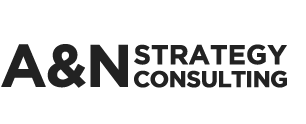Role of Intellectual Resources and Knowledge-based Capabilities in Driving Performance and Profitability
James Brian Quinn, in his book Intelligent Enterprises, describes the term “intellect” as it “is the core resource in producing and delivering services.” 1 A powerful intellect is a strength and by combining strengths a firm can build knowledge-based capabilities that can drive sustainable competitive advantage.
The dictionary meaning of “intellect” is the power or faculty of the mind by which one knows or understands, capacity for thinking and acquiring knowledge, and faculty of mind that can analyze, differentiate, reason, determine and solve complex problems. A well-developed intellect holds the reins of the mind. And a well-controlled mind can make better decisions. A human resource that has the above-mentioned characteristics is called an intellectual resource. An intellectual resource is an individual contributor who can also function as a team member, is part of a business’s intellectual property, and comes under the study of knowledge management. Intellectual resources possess tacit knowledge because its transfer is slow and costly. Therefore, these knowledge-based capabilities will not be easy to imitate and replicate. Generally, the most important resources of a firm are human resources. Therefore, in our discussion, a “resource” will mean the skills, competency, and knowledge of an individual resource.
An intellectual resource is capable of providing the firm with a competitive advantage as a single contributor. For example, designing a high-tech product using computer-aided design (CAD) tools, and developing the first prototype is not a challenging project for a team of engineers, but in general, the final product remains far away from meeting the final performance goals and objectives. Problem-solving can sometimes be overly complex, but here often the role of one or few intellectual resources (the company’s geniuses) product design and problem-solving skills comes into play that not only solves the most critical problems but also enhance the product’s performance to above average, that further contributes to product differentiation to gain competitive advantage. A powerful intellectual resource is capable of integrating all his intelligence, knowledge, and skills, and can put it to best use. Thousands of medical students graduate from medical schools each year, but only a few of them discover life-saving drugs.
A resource is called a strength when it provides the firm with a competitive advantage. A corporation combines its strengths from functional areas, business units, components of the value chain, and through collaboration with other companies to develop capabilities. Corporate capabilities (often called core competencies) are the things that a corporation can do exceedingly well. When these capabilities/competencies are superior to those of competitors, they are often called distinctive competencies.2To generate and sustain competitive advantage, the firm should formulate and implement strategies that effectively utilize its unique strengths and capabilities. Many high-profile biotech and pharmaceutical companies rely on their knowledge-based capabilities to generate high value-added or profitability. These companies also concurrently build their sustainable competitive advantage based on slow–cycle resources, such as patents, copyrights, and brand names. Intelligent resources and knowledge-based capabilities have more power to generate both low-cost and differentiation advantages compared to ordinary resources and capabilities.
Knowledge-based capability development is a systematic, continuous, costly, and time-consuming process that could be quite challenging. For example, Apple combined its strengths from hardware and software engineering, other functional areas, and through external collaboration to develop its first iPhone, which took approximately three years and was a challenging effort, considering that it was entering a highly competitive cell phone market which was reaching its maturity that time.3
Basing a firm’s strategy just on resources and capabilities, as justified by the resource-based view, is not enough. A firm should also consider becoming a learning organization—that continually works on developing superior resources and capabilities, also monitors and analyzes the external environment, and develops strategic flexibility, to cope with the changing external environment.4Therefore, to become and remain successful in today’s rapidly changing business environment, firms must also remain aware of its external strategic factors within its external environment as well as to adapt or synchronize itself (lock-in) with it. Failing to stay in tune and or failing to adapt to external changes can cause economic ruin. For example, Nokia’s constant decline (2007-2012) was mainly due to a failed strategy, which did not adapt to the changing external environment at that time. After 2007, Apple’s iPhone demand was growing because of its “touch-screen and applications-based product” features over Nokia’s keypad-type smartphones. Another example is Motorola, which during the mid 2005s lost its market share to Nokia due to shifted consumer demand to GSM phones (Nokia) from CDMA-type phones (Motorola). The firm should be capable of providing the goods and services the consumers want and also get what it needs from its internal environment in terms of resources and capabilities to develop and deliver those products and services. Because a firm has no control over its external environment, the only assets left with it are its resources and capabilities upon which it can develop its strategy to outperform the competition to gain and sustain competitive advantage and command a higher rate of profit. These achievements are only possible when an organization becomes a learning organization.
References and Further Reading
- J. B. Quinn, Intelligent enterprise (NY: The Free Press, 1992), p. 3.
- T. L. Wheelen & J. D. Hunger, Strategic Management & Business Policy (N.J., Prentice-Hall, 2000), pp. 53-83.
- R. M. Grant, Contemporary Strategy Analysis (United Kingdom: John Wiley & Sons, Ltd., 2013), Chapters 5 and 8.
- Ibid. 2, pp. 7-8.
- J. B. Barney, “Firm Resources and Sustainable Competitive Advantage,” Journal of Management 17(1991) pp. 99-120.

Comments
Want to join the discussion?Feel free to contribute!